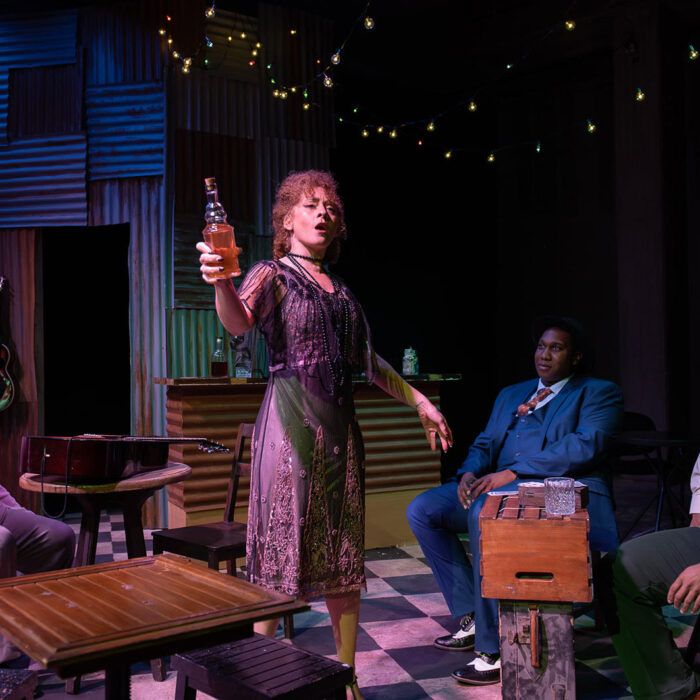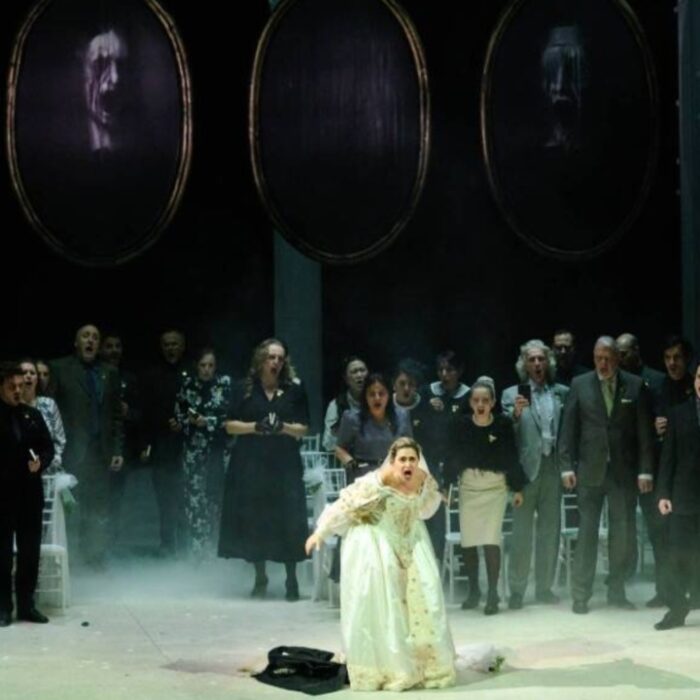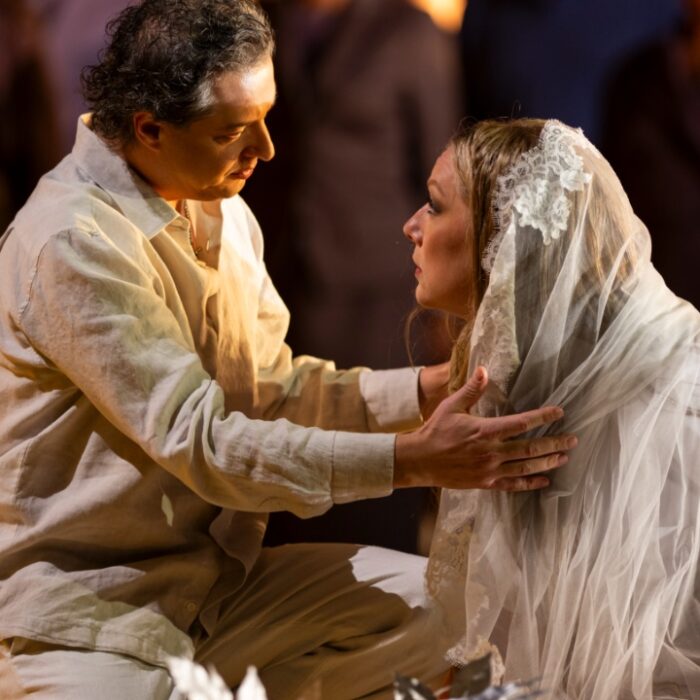
San Diego Symphony 2021-22 Review: Song and Symphony
Rafael Payare & Michelle DeYoung Team Up for Rousing Showcase
By Francisco SalazarOn Oct. 16, the San Diego Symphony Orchestra presented a diverse program entitled Song and Symphony at the newly constructed Rady Shell. The program included three composers from different backgrounds and countries that were united by the passionate musical language of each piece.
The result was an exciting exploration of music led by the infectious conducting of Rafael Payare.
Lili Boulanger
The evening began with Boulanger’s “D’un soir triste” which was layered with many expressionistic qualities that took advantage of the wind sections and the darker colors that the orchestra produced. Also of note were the beautifully played solos by the principal cellist and violinist, delivering gentle tones. Conductor Payare was especially effective in the piano sections that eventually crescendoed to epic fortes. Each repetition of these dynamic patterns was given greater contrast and thus increased potency.
In the second piece of the evening “D’Un Matin de Printemps,” there was a more serene quality to the orchestra that gloriously depicted those watery spring colors. There was also more playfulness within the solo lines that were traded off between the concertmaster, the principal second violinist and the principal violist. The cello solo was also filled with great warmth.
Gustav Mahler
The second part of the performance included Mahler’s “Lieder eines fahrenden Gesellen,” performed by mezzo-soprano Michelle DeYoung in her San Diego Symphony debut. The opening song “Wenn mein Schatz Hochzeit macht” displayed DeYoung’s low voice as she relished the dark husky sound of her timbre and emphasized the grief-stricken text. One could sense that pain in her use of dynamics particularly in the piano lines of the piece. However, there were some rough edges during the movement, particularly in the higher register which did not always connect with the potent lower tessitura.
The second song, “Ging heut’ Morgen über’s Feld” showed off DeYoung’s lighter side as the voice took on a sunny and delicate color that expressed the joy of nature. She was well accompanied by the orchestra which too took advantage of the higher string sounds and the floaty flute timbre. Here, DeYoung’s voice blossomed especially in the upper register; one could hear each word with precision and delight. There were some beautifully executed coloratura passages that showcased the flexible quality of DeYoung’s voice. In the second part of the song, as the text questions this happiness, the voice took on a more fragile turn and DeYoung relished the pianissimo phrases.
The third song “Ich hab’ ein glühend Messer” showcased the most dramatic qualities of the mezzo’s voice as her mezzo soared with incredible power. DeYoung sang with great emotion as her higher register gleamed; in the B section, the voice took on a softer tone that felt like a lament. She crescendoed toward a climactic and intense fortissimo.
The final song, “Die zwei blauen Augen von meinem Schatz,” spotlighted DeYoung’s middle register and her immaculate legato lines. Here DeYoung delivered some beautiful piano singing that floated gorgeously and resolved the song cycle with sublime diminuendos. It felt like a reflection after so many different emotions from the previous three songs. As the mezzo ended her final lines, the orchestra slowly ended the piece on a delicate note.
Piotr Illych Tchiakovsky
The highlight of the evening was by far the performance of Tchaikovsky’s Symphony No. 5. Payare started the first movement a bit slow for the Andante portion but he created an ominous texture with the clarinet solos that eventually led into the Allegro con anima. In this second section, Payare took his time emphasizing the march-like rhythm in the winds before the strings took over and sped up the tempo to give the piece forward momentum. From there it was all about emphasizing the dramatic weight of the first movement before getting into the B melody which was delivered by strings with an ethereal texture. Instead of slowing or expanding the melody as is custom, Payare went for a propulsive tempo that eventually led to an immense crescendo. It was not until the return of this B melody that the conductor expanded the tempi and gave time for the strings to really bring out even more expressive qualities in the music. This choice gave contrast to the movement and allowed for the eventual climax to deliver more potently.
In the Andante Cantabile, Payare once again chose a much faster tempo. One has to give credit to the French Horn player for commencing the movement with a warm tone and then for the clarinet, bassoon, and oboe to follow with lush timbres that played on the question and answer form of the movement. Once the cello section entered with its luxuriant sound, Payare’s conducting was taken by the passionate music. Each layer was built with a compelling crescendo until it reached the first climax. That first climax led the audience to applaud with fervor. But Payare was not done. The second time around, Payare led the orchestra with complete intensity. While it could sound a bit bombastic in the brass and lacked a clean sound, that imperfection and spontaneity made this rendition of the adored movement all the more fresh and emotional.
During the Valse: Allegro Moderato, Payare conducted as if he was almost dancing to the music. The wind solos were gorgeously played and the few rallentandos by the bassoons and flutes were extremely subtle. The violin runs were very clean and precise, providing great contrast with the wind solos.
The final movement began with a lamenting Andante Maestoso, featuring immaculate articulation that in the hands of Payare was more like an Allegro ma non troppo. The following Allegro Vivace was filled with excitement and drive. The timpani was present at many moments and the strings played their runs with incredible bravura, especially given the fast tempo. The articulation in the staccato section was intense and exciting. The lower strings, while playing the melody, articulated with noticeable accents. And as the movement headed toward its climax, Payare delivered a apotheosic crescendo that got the audience bravoing before the movement’s coda had even begun. Speaking of the coda, here, Payare drove the tempo to an exciting conclusion that was filled with impassioned playing from its musicians. That impassioned playing was contagious, leading to rousing applause from a truly appreciative and excited audience.
And thus concluded a fantastic performance featuring masterful pieces of music from three geniuses.


